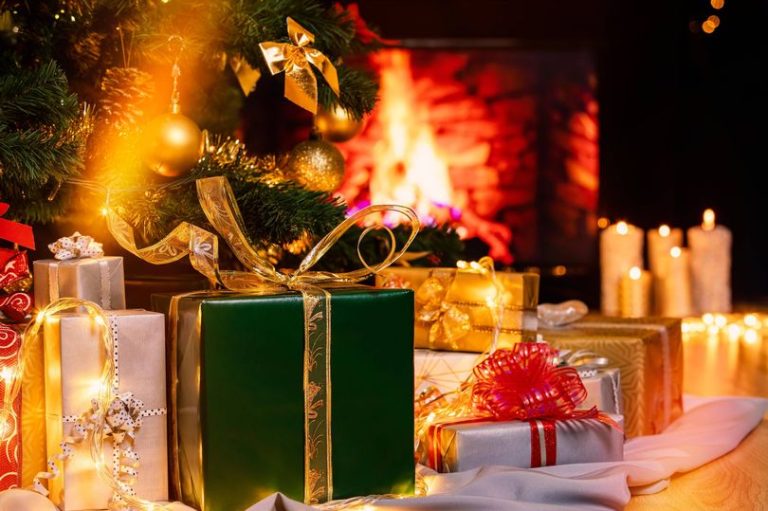Christmas is supposed to be a season of tinsel, mince pies, and ‘The Muppets Christmas Carol’, not an unexpected visit to Accident and Emergency (A&E). However, with the holiday bustle, homes decked in fairy lights, and ovens working overtime, accidents can happen.
There are measures you can take to ensure your family’s safety during the festive period. “We want people to have fun at Christmas,” says James Broun, research manager at The Royal Society for the Prevention of Accidents (RoSPA). “You’re not going to be having fun if you’re going to A&E on Christmas Eve or your grandparents have a slip. It’s about trying to create an environment where you can have fun by making your house safe in practical ways.”
In case of an accident, it’s crucial to seek medical attention immediately, but with some awareness and preparation, you can enjoy a safe and joyful festive period. Falls are the top cause of accidental death in the UK.
“Thousands of people die every year as a result of falls, and many hundreds of thousands are hospitalised,” Broun points out. In 2023, falls led to 450,000 A&E visits.
Christmas can set the stage for particular kinds of falls, he says: “When people go up into the loft to get boxes down, or the rafters of their garage, they often end up climbing a ladder, something a lot of homeowners don’t actually do that often.”
The festive season brings with it an increased risk of accidents in the home, particularly for older individuals who may be less stable on their feet, leading to serious falls – a staggering 3,500 over-65s succumb to such incidents annually. Children are also at risk as they might follow their parents into potentially dangerous areas like lofts or up ladders, resulting in falls.
The task of hanging lights both inside and outside the house can lead to precarious situations, and homes bustling with visiting relatives heighten the chances of trips and stumbles. “They’re not necessarily familiar with your stairs, where things are at night when they go downstairs for a glass of water,” notes Broun.
“Maybe the kids have left toys on the stairs…” He emphasises the importance of vigilance: ensuring children are supervised, setting up ladders securely, and taking extra care in unfamiliar or dark spaces, especially if alcohol is involved.
“If you’re in an unfamiliar space and it’s night time, maybe you’ve had a bit to drink, put a light on if you’re walking down the stairs, hold the handrail, and let’s not leave children’s toys scattered around,” advises Broun.
During Christmas, the likelihood of kitchen-related burns, such as scalding oneself with gravy or getting burned while removing the turkey from the oven, increases, as does the risk of singeing eyebrows when serving a flaming Christmas pudding. However, Adrian Simpson, RoSPA head of policy, points out that a significant cause of burn injuries during this period is the use of hot water bottles, which has seen a 55% rise in child burn cases reported by the Children’s Burns Trust.
“People are using hot water bottles a lot more due to the cost of living crisis,” explains Simpson.
“People traditionally keep hot water bottles in their families for many years. You will see a daisy wheel on it that will tell you the year and month it was manufactured. We advise people to check the age of the hot water bottle to make sure it’s not perishing.”
Electrical hazards are also a significant risk during the festive season, with overloaded extension leads and defective fairy lights posing threats of fires and electric shocks. And don’t forget about your Christmas tree.
“I can imagine a scenario where a very curious cat likes the glistening bauble at the top of the tree, decides to climb it, accidentally pulls it over, and it lands dangerously close to somebody’s open fire while they’re prepping a turkey,” Broun cautioned. He also advised, “Think about where things are placed in a room. If you’ve got a tree that is real, water it. If you’ve got a plastic tree, make sure it conforms to British Standards and be careful of it near open heat sources, because it can potentially be flammable.”
The dangers extend beyond the home, with Broun highlighting road safety concerns: “Collisions caused by rain, sleet, snow, or fog increased by 8% over the last couple of years. 59 people were killed due to slippery roads in 2023, and rain, sleet, snow or fog caused 21 deaths on the road,” He noted that the shorter days and longer nights of the season, combined with challenging weather conditions, increase the risks associated with driving, particularly when journeying home for Christmas.
The dangers of drink driving are also significant. “Last year, nearly 9,000 drivers were caught drink driving, which was an absolutely massive number,” states Simpson.
“Don’t drink and drive – at all.”
Hidden hazards may not be obvious to your toddler, but Christmas decorations are not toys and therefore, are not regulated like toys. “Toys have a tremendous amount of safety rules and regulations around them, things like heavy metals used in them, safety warnings, choking warnings, that do not apply to Christmas decorations,” Simpson explains.
“For caregivers of children or vulnerable adults, consider, could those decorations be placed higher up the tree where they are more out of sight and reach? “Another item that is “hugely unsafe” for children – and if swallowed, can cause serious internal injury and even death – is button magnets. “Keep them out of the reach of children. Don’t leave them lying around. Once they are used and spent, dispose of them very, very quickly,” Simpson cautions.
When it comes to purchasing toys as gifts, “we advise parents and caregivers to look for the UKCA or CE marking on toys,” says Simpson. “This is the manufacturer declaring that the goods conform to all the relevant health and safety and environmental requirements. And ensure the product is bought from a legitimate, reputable retailer, not one that’s appeared overnight, because we simply don’t know how many safety checks that retailer has done.”
He adds: “Don’t prioritise cost savings over safety.”



